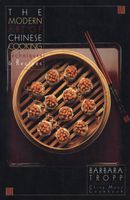Advertisement
Yin and Yang in the Chinese Kitchen
Published 1982
Every Chinese chef, from the simple Taiwanese peasant who stir-frys in a single wok by the roadside to the fastidiously trained banquet chef in charge of a Peking duck restaurant catering to a thousand, works unconsciously or consciously according to the culinary rules of yin and yang. It is not a hard and fast law of exacting combinations, like the one which binds Japanese macrobiotic cooking, but rather a gentle intuition and a visual and sensory confirmation of what does and doesn’t go together. It may not even be known by name, but it is inbred in the culture. The roadside cook habitually combines white, salted chicken and green, sugar-sweet snow peas in a simple stir-fry and serves it alongside a bowlful of steamed rice. The banquet chef, in a different setting, orchestrates a majestic dinner featuring platters of crunchy mahogany duck skin, tender beige duck meat, crisp and chilled green scallions, steaming soft and white mandarin pancakes, and unctuous purple-black hoisin sauce. Each of them plans a meal where flavors, textures, colors, food types, and cooking methods are presented in conspicuous juxtaposition. This is the unvarying rule of the Chinese kitchen, wherever it be and no matter how humble or grand.

